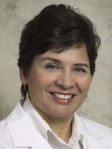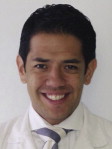

Fundamental to our ability to provide care to our patients, educate our medical students and trainees, and conduct SCI clinical research is having well-defined standards for neurological classification based on the clinical examination. The first article, therefore, reviews the International Standards for Neurological Classification of SCI, known since 2000 as the “ISNCSCI.” The ISNCSCI has evolved over time in the hopes of giving a precise and easily duplicated assessment of such injuries. Also discussed is the ASIA Impairment Scale and the recent educational modules that address standards for autonomic function and spasticity.
Technological advances are the topics for articles on the use of hypothermia as a clinical neuroprotectant to blunt the inflammatory cascade that contributes to SCI, the use of ultrasound to diagnose acute and chronic neuromuscular issues in SCI, and the use of functional electrical stimulation for respiration, upper and lower extremity function, and bladder function. Phrenic nerve electrical stimulation has been used for decades. More recently, less invasive surgical techniques have developed that have increased the potential number of patients with high-level tetraplegia, complete or incomplete, who may be candidates for a diaphragm pacemaker, a device that can obviate long-term ventilator management and its associated costs and care burden.
As the length of stay for inpatient rehabilitation shortens and care shifts to outpatient practice, two nearly universal concerns that deserve discussion include neuropathic pain and spasticity management. The pathways and management strategies for these conditions are discussed in respective articles as well. Other common causes of morbidity in spinal cord–injured patients include neurogenic bladder (and associated UTIs) and pressure ulcer development. Given their prevalence and impact on the spinal cord population, their discussion is an integral part of any collection of SCI management topics. Issues with a more longitudinal impact as the spinal cord–injured population ages and has ever-improving longevity include obesity and cardiovascular disease. We know that cardiovascular disease is a leading cause of mortality and we have included a discussion of management of both obesity and cardiovascular disease in this issue.
Finally, the discussion of the dual diagnosis of SCI and traumatic brain injury is an important consideration as many trauma patients with SCI may be underdiagnosed with both conditions, and such patients may require a more careful focus of care.
Each of the authors selected to present a topic has vast knowledge and experience in their respective field of discussion, and their contributions will further assist in bringing new recommendations and reinforcing treatment guidelines to manage many challenging aspects of SCI. We hope that you will find this issue of practical value and perhaps even new research ideas will be generated.
Stay updated, free articles. Join our Telegram channel

Full access? Get Clinical Tree





